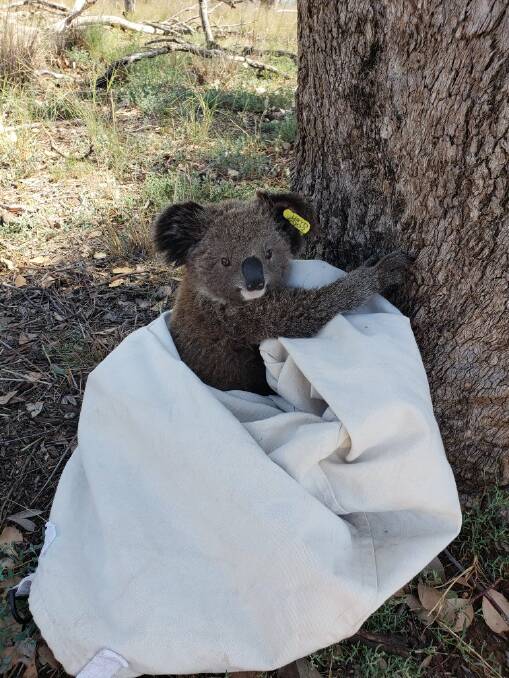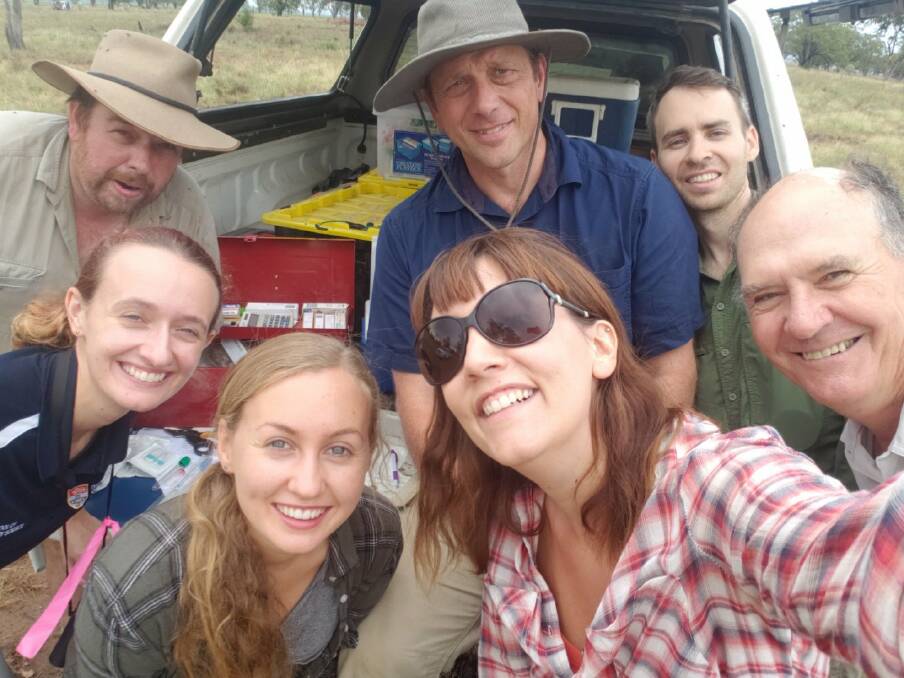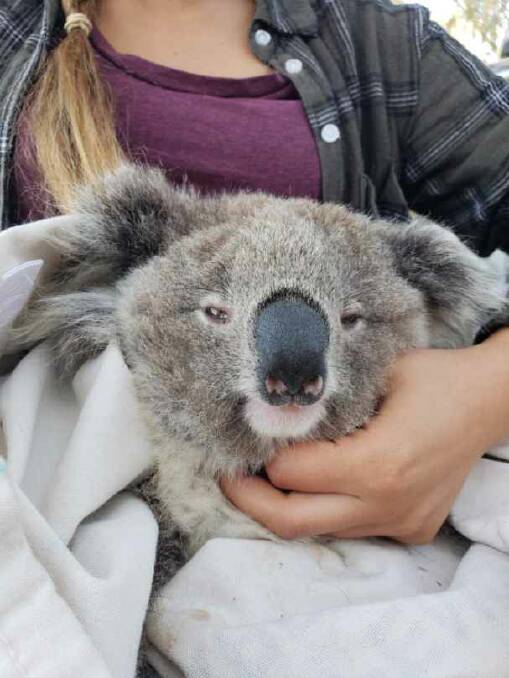
Gunnedahs koalas will help researchers to understand how they utilise water in an ongoing university study.
Subscribe now for unlimited access.
or signup to continue reading
A team of 11 students and researchers from the University of Sydney came to Gunnedah last week to take blood samples from koalas to investigate the impact of water consumption, and their overall health.
Dr Valentina Mella led the team, which captured almost 50 koalas over the past 10 days at two properties the Dip, and Dimberoy, owned by Blinky Drinker designer Robert Frend.
We catch koalas that access the [water] drinkers and we put collars on them for a week so we can catch them again, and we catch some koalas that dont use the drinkers, Dr Mella said.
What we wanted to do was to compare a group of animals that are drinking regularly with another group of animals that dont drink regularly at the drinkers and measure the water turnover rate how quickly the water is absorbed.

The blood samples for the water study will be sent to the University of Western Australia to be analysed, with results not expected until May.
The university started the water turnover study in winter last year and found that koalas that drink regularly turn around the water better than others; something that is particularly important in summer when koalas are at a high risk of dehydration.
The fortnights high temperatures forced the team to start work in the wee hours of the morning so they could capture the koalas in cooler temperatures.
We started at 3am and by 9am we were finished, Dr Mella said.
We cant catch when its over 30 degrees - its our rule because we dont want to risk the animals welfare because, of course, there is a component of stress when you catch them.

Dr Mella said it was relatively easy to catch the koalas on this field trip because the heat meant the animals were often low in the trees or already on the ground. The team also found seven koalas with joeys 4-6 weeks of age in their pouches, and a couple of small joeys.
I was very excited that we got so many new animals. We didnt expect as many pouch young, but we have to see if they survive first, she said.
We estimate the Dimberoy [koala] population to be about 75 individuals, which is quite good.
Veterinary pathologist Mark Krockenberger has been on the team since 2015 and focuses on health and disease, particularly chlamydia. He believes the rise in joey sightings could be a good sign.
Im hoping there will be some stablisation of the prevalence of disease, but well only know when we get the latest results after the trip, he said.
I was very excited that we got so many new animals. We didnt expect as many pouch young.
- Dr Valentina Mella, University of Sydney
On this trip, the vet gathered 60 specimens, which will be used to examine biochemistry muscle tone, kidney function and liver function.
"Were trying to search for a general health indicator and one of the things were investigating at the moment is, can we look at enzymes, that are found normally in muscle cells, circulating in the blood, as an indicator of health, Professor Krockenberger said.
Its particularly related to dehydration or how theyre using water.
Well be able to get a handle on that once weve done the analysis back in the lab and correlated with our clinical findings.

Swabs of koalas eyes and urogenital tracts were also taken during the field trip and will be used to detect chlamydial DNA.
We are trying to observe [chlamydia] and its only if theres a welfare concern we take them to WIRES, Mr Krockenberger said.
We also look at whether we can detect koala retrovirus - some variants of it might have an impact on immune function.
We haven't detected the variants that are particularly concerning in this area.
Results from the universitys field trip are expected mid-year.

